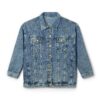Custom T-shirt design is a fantastic way to express individuality, creativity, or brand identity. However, designing a custom T-shirt involves a few key considerations to ensure the finished product aligns with your vision. From choosing the right fonts and color schemes to understanding printing formats and color codes, each design choice contributes to the final look. In this guide, we’ll explore some essential elements to consider for creating a custom T-shirt that truly stands out.
1. Custom T-Shirt Design: Balancing Style and Function
The first step in custom T-shirt design is establishing the overall look and feel. Think about the purpose of the T-shirt—are you designing for a brand, event, personal use, or a special occasion? Consider whether you want a more vibrant, colorful look or a minimalistic, flat design.
Key Questions for Design Direction:
- Purpose: Why is the T-shirt being designed? A brand message may need bold graphics, while personal designs may lean toward subtle colors.
- Audience: Who will wear the T-shirt? Bright colors and playful designs may appeal to a younger audience, while simple, elegant designs are often preferred by a mature crowd.
- Style: Do you want a flat, minimalistic look or a more colorful, dynamic design?

2. Font Selection: Choosing Readable and Aesthetic Fonts
Fonts play a crucial role in custom T-shirt design, especially if the shirt includes text. Your choice of font not only impacts readability but also conveys a particular tone or personality. Bold and decorative fonts add energy and flair, while classic and clean fonts maintain a timeless look.
Tips for Choosing the Right Font:
- Readability: Ensure that the font is legible from a distance. Avoid overly intricate fonts, especially for smaller text.
- Consistency: If using multiple fonts, make sure they complement each other. Try pairing a bold display font with a simple, clean font for balance.
- Personality: Fonts like serif and script fonts exude elegance, while sans-serif and bold fonts give a modern, playful look.
Common Font Issues:
- Scaling: Some fonts don’t scale well, losing readability at smaller or larger sizes. Always check how your font appears in different sizes.
- Color Contrast: Ensure the font color contrasts well with the T-shirt background. Dark fonts on dark colors can be hard to read.

3. Color Choices: Vibrant vs. Flat
Color choice is one of the most defining aspects of T-shirt design. Deciding between a vibrant, multi-color palette or a flat, minimalistic look depends on the effect you want to achieve.
Choosing Between Colorful or Flat Design:
- More Colorful: If you want the design to stand out or create a fun, engaging look, consider vibrant colors. This style works well for youthful or festival-themed designs.
- Flat Colors: For a classic, understated look, go with a flat, limited color palette. This approach is often used for elegant or professional designs.
Popular Color Formats in T-Shirt Design:
- CMYK (Cyan, Magenta, Yellow, and Black): Best for screen printing and used in most professional printing processes.
- RGB (Red, Green, Blue): Ideal for digital design but should be converted to CMYK for printing to avoid color distortion.
- Pantone: These are standardized colors that ensure consistent colors across different print jobs, useful for brand-focused designs.

4. Understanding Printing Color Formats
The type of printing process you choose can affect the colors and overall quality of your design. Screen printing, DTG (Direct-to-Garment), and heat transfer printing are popular methods, each with its own color considerations.
Printing Methods and Color Compatibility:
- Screen Printing: Works best with flat, solid colors. Each color requires a separate screen, so fewer colors make for a more cost-effective print.
- Direct-to-Garment (DTG): Can handle full-color designs, gradients, and detailed graphics. This is ideal for complex designs with multiple colors.
- Heat Transfer: Typically uses CMYK and is suitable for bright, colorful designs, though it may be less durable than screen printing and DTG.
Consider consulting with your printer to determine the best color format and printing method for your design.
5. Graphics for Print: Design Quality and Resolution
A custom T-shirt with graphic elements needs high-resolution images to ensure the print is crisp and professional. Graphics should be created or exported in at least 300 DPI (dots per inch) for quality printing.
Tips for Graphic Design Quality:
- Resolution: Always use high-resolution images (300 DPI or higher) to prevent blurriness in the final print.
- File Types: Use vector formats like .AI or .SVG for scalability or high-resolution .PNG files if vector files aren’t available.
- Placement: Experiment with graphic placement. Centered designs are classic, but top corners or lower hems can create unique looks.
If using intricate designs, keep in mind that some details may be lost on certain materials or with certain printing methods.

6. Color Combinations and Codes: Getting It Right
Choosing the right color combinations and codes ensures consistency across your design and print. Colors should complement each other, with sufficient contrast to make graphics and text stand out. Use color codes (HEX, CMYK, or RGB) to communicate exact colors to your printer.
Guidelines for Color Combination and Codes:
- Complementary Colors: Colors opposite each other on the color wheel (e.g., blue and orange) create a vibrant look.
- Monochromatic Schemes: Using variations of a single color adds depth without overwhelming the design.
- Analogous Colors: Colors next to each other on the color wheel (e.g., blue, teal, and green) offer a harmonious, cohesive look.
Common Color Code Formats:
- HEX: #FFFFFF (white), #000000 (black) — mainly used in digital designs.
- CMYK: Cyan, Magenta, Yellow, Black — preferred for screen and print designs.
- RGB: Red, Green, Blue — used in digital previews but should be converted for printing.
For custom T-shirts, choosing the right color scheme can make the difference between a striking design and a visually cluttered one.
Bringing It All Together: Creating Your Ideal T-Shirt Design
Creating the perfect custom T-shirt involves blending your font choice, color palette, and graphics with the appropriate printing method and color codes. Whether you want a bold, colorful design or a classic, flat look, considering each of these elements will help bring your vision to life. Remember to work closely with your printer to ensure colors and graphics align with your expectations.
With thoughtful planning and an eye for detail, your custom T-shirt will stand out, reflect your unique style, and make a lasting impression.




